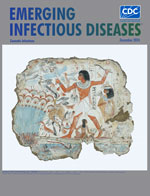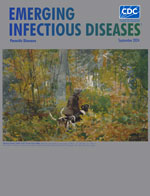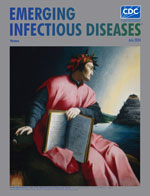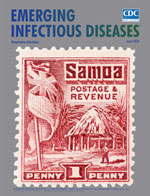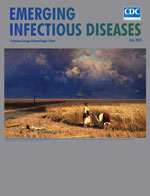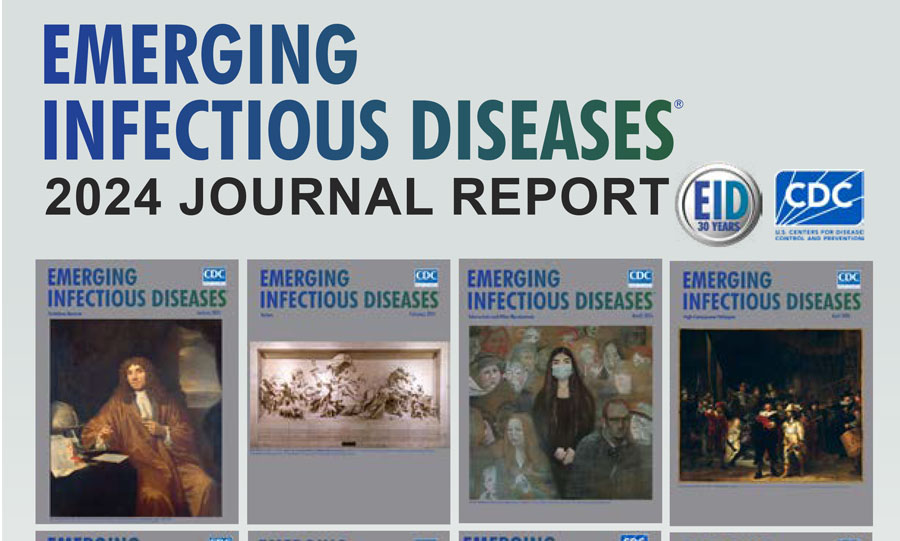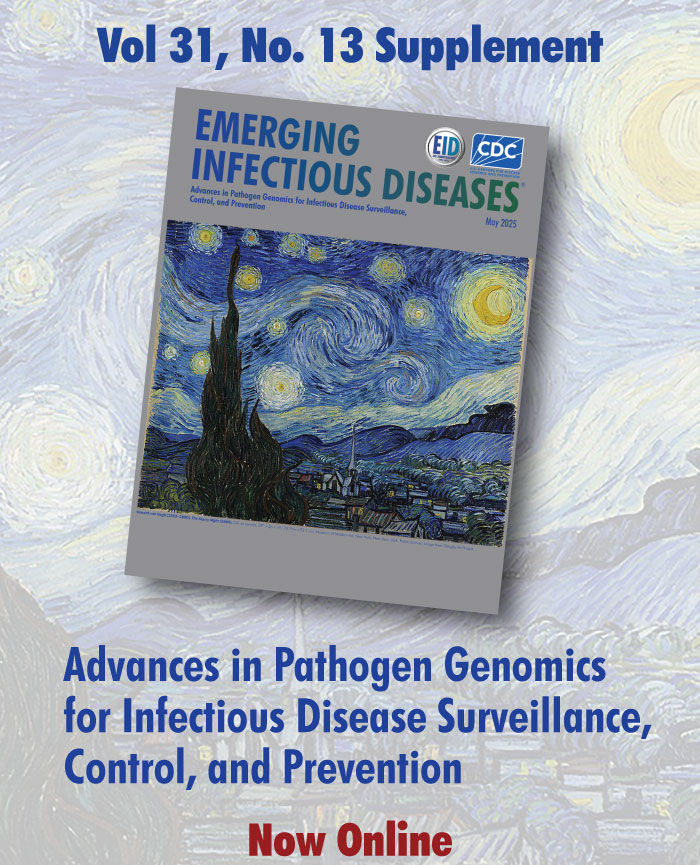Podcasts
New Podcasts
Homelessness and Bartonella quintana Infections
Thelazia callipaeda Eyeworms in American Black Bear, Pennsylvania, USA, 2023
Infectious Diseases and Clinical Xenotransplantation
Past Podcasts
Volume 7-2001 and Volume 5-1999 are links to podcasts recorded in 2015 about articles that appeared in EID during those years. Volume 12-2006 is a link to a podcast recorded in 2018.
Volume 30—2024
Homelessness and Bartonella quintana Infections
Dr. Grace Marx, an infectious disease physician and medical epidemiologist with CDC's Division of Vector-Borne Diseases, and Dr. Emily Mosites, an epidemiologist at the Multnomah County Health Department in Portland, Oregon, discuss Bartonella quintana infections among people experiencing homelessness.
Download Transcript
View full-text article: Homelessness and Organ Donor–Derived Bartonella quintana Infection
Loop-Mediated Isothermal Amplification Assay to Detect Invasive Malaria Vector Anopheles stephensi Mosquitoes
Cristina Rafferty, a molecular biologist with the US President's Malaria Initiative at CDC, and former Public Health Entomology for All program interns Gloria Raise and JeNiyah Scaife discuss a new loop-mediated isothermal amplification assay to detect invasive malaria vector Anopheles stephensi mosquitoes.
Download Transcript
View full-text article: Loop-Mediated Isothermal Amplification Assay to Detect Invasive Malaria Vector Anopheles stephensi Mosquitoes
Thelazia callipaeda Eyeworms in American Black Bear, Pennsylvania, USA, 2023
Dr. Carol Sobotyk, an assistant professor of clinical parasitology and director of the Clinical Parasitology Laboratory at the University of Pennsylvania, and Candice Hoffmann discuss Thelazia callipaeda eyeworms in an American black bear.
Download Transcript
View full-text article: Thelazia callipaeda Eyeworms in American Black Bear, Pennsylvania, USA, 2023
Newly Recognized Spotted Fever Group Rickettsia as Cause of Severe Rocky Mountain Spotted Fever-Like Illness, Northern California, USA
Doctors Anne Kjemtrup and Kerry Padgett from the California Department of Health and Candice Hoffmann discuss a newly recognized spotted fever group Rickettsia as the cause of severe Rocky Mountain spotted fever-like illness in California.
Download Transcript
View full-text article: Newly Recognized Spotted Fever Group Rickettsia as Cause of Severe Rocky Mountain Spotted Fever–Like Illness, Northern California, USA
Infectious Diseases and Clinical Xenotransplantation
Dr. Jay Fishman, a professor of medicine at Harvard Medical School and director of the Transplantation Infectious Disease Program at Massachusetts General Hospital, and Candice Hoffmann discuss xenotransplantation.
Download Transcript
View full-text article: Infectious Diseases and Clinical Xenotransplantation
Decolonization and Pathogen Reduction Approaches to Prevent Antimicrobial Resistance and Healthcare-Associated Infections
Dr. Mihnea "Mike" Mangalea, a microbial ecologist and bioinformatician in CDC's National Center for Emerging and Zoonotic Infectious Diseases, and Candice Hoffmann discuss decolonization and pathogen reduction approaches to prevent antimicrobial resistance and healthcare-associated infections.
Download Transcript
View full-text article: Decolonization and Pathogen Reduction Approaches to Prevent Antimicrobial Resistance and Healthcare-Associated Infections
Carbapenem-Resistant and Extended-Spectrum β-Lactamase–Producing Enterobacterales in Children, United States, 2016–2020
Dr. Heather Grome, a medical epidemiologist in CDC's National Center for Emerging and Zoonotic Infectious Diseases, and Candice Hoffmann discuss antimicrobial-resistant infections in children.
Download Transcript
View full-text article: Carbapenem-Resistant and Extended-Spectrum β-Lactamase–Producing Enterobacterales in Children, United States, 2016–2020
Crimean-Congo Hemorrhagic Fever Virus for Clinicians-An Overview
Dr. Gaby Frank, a hospitalist and medical director of Denver Health Hospital Authority's Biocontainment Unit and a professor of medicine at the University of Colorado School of Medicine, and Candice Hoffmann discuss Crimean-Congo hemorrhagic fever virus.
Download Transcript
View full-text article: Crimean-Congo Hemorrhagic Fever Virus for Clinicians—Virology, Pathogenesis, and Pathology
The conclusions, findings, and opinions expressed by authors contributing to this journal do not necessarily reflect the official position of the U.S. Department of Health and Human Services, the Public Health Service, the Centers for Disease Control and Prevention, or the authors' affiliated institutions. Use of trade names is for identification only and does not imply endorsement by any of the groups named above.
